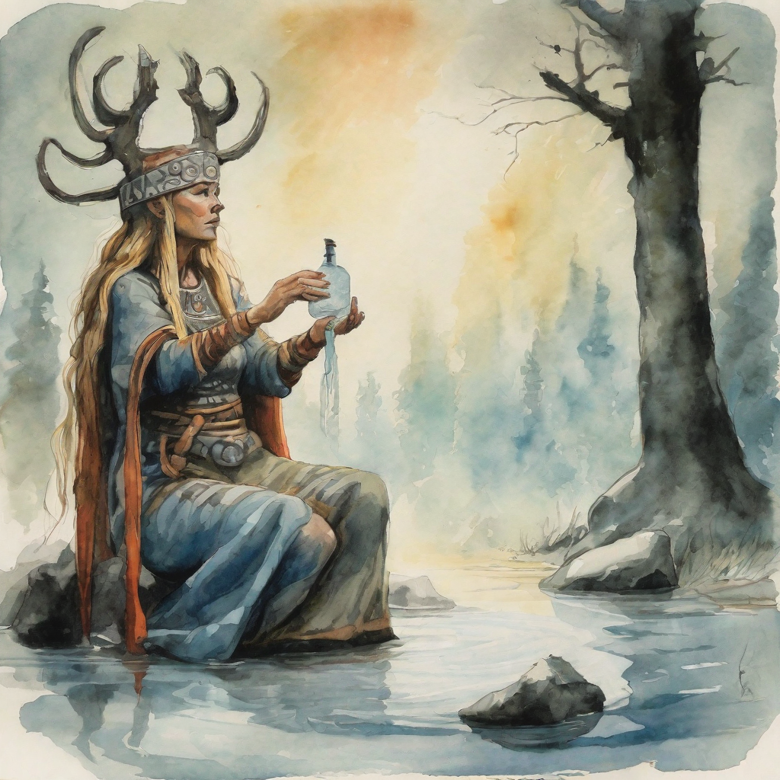
The origins of seiðr can be traced back to ancient circumpolar Eurasian shamanic practices, which likely diffused southward into Germanic and Norse proto-cultures. Archaeological evidence, such as drumming, chanting, bone fragments found in graves, and ritual costumes, demonstrates a long tradition of shamanic religion across northern Eurasia that predates the Viking Age.
The interaction between Norse settlers and Sámi and Finnic groups from the 5th century onwards played a significant role in infusing syncretic circumpolar elements into Odinic and Vanic seiðr customs. However, the exact extent of seiðr's roots remains somewhat opaque.
Medieval accounts of seiðr were influenced by Christianization, which introduced biases and potential distortions. Nevertheless, modern archaeology and surviving folk practices provide valuable clues for reconstructing a clearer picture of seiðr. Comparative Sámi ethnography also helps in decoding what may have been lost in translation or deliberately altered.
For example, grave remains that include the burial of a volva (a female practitioner of seiðr) with a wand and ritual accouterments counter the biases present in textual accounts. However, it is important to note that there were inconsistencies among the accounts, indicating the diversity of seiðr practices across Scandinavia. The more extreme aspects of seiðr may reflect deeper circumpolar influences in the Norse-Sámi border regions.
Seiðr occupied a complex nexus of religion, magic, gender, social norms, cultural contact, and the connection between the seen and unseen realms. As the Viking Age gave way to Christianization, seiðr gradually faded but did not entirely vanish. Fragments of it persisted as folk practices throughout the centuries, laying the foundations for its modern rediscovery.
In contemporary times, there is a heightened interest in reviving seiðr practices among Germanic Neopagan groups and individuals seeking to reconnect with Norse heritage and cosmology. However, effectively reconstructing seiðr poses challenges due to the limitations in medieval accounts and the extensive cultural changes that have occurred over time.
While some have attempted to resurrect seiðr by referencing surviving records and later folk practices, the transition to Christianity resulted in the loss of much seiðr lore. Modern practitioners often maintain the oneiric and visionary aspects of seiðr but may avoid or alter more controversial facets tied to animal sacrifice and intoxicants.
Academic research into seiðr offers insights not only into Norse spirituality but also into shamanism as a global phenomenon and a perennial form of mysticism. Seiðr exemplifies how practices such as trance, soul flight, animism, communication with spirits, and conceptions of an interconnected cosmic web transcend singular cultures or religions.
The allure of seiðr today extends beyond Nordic identity and speaks to humanity's enduring need for direct encounters with holistic realms of meaning. By uncovering lost practices like seiðr, we can illuminate the past and address timeless spiritual yearnings.
In summary, seiðr was an integral part of ancient Norse spirituality and cosmology, with deep roots in shamanic practices. Its revival today provides insights into the metaphysical worldview, customs, and culture of the ancient Norse people.
Comments
Post a Comment